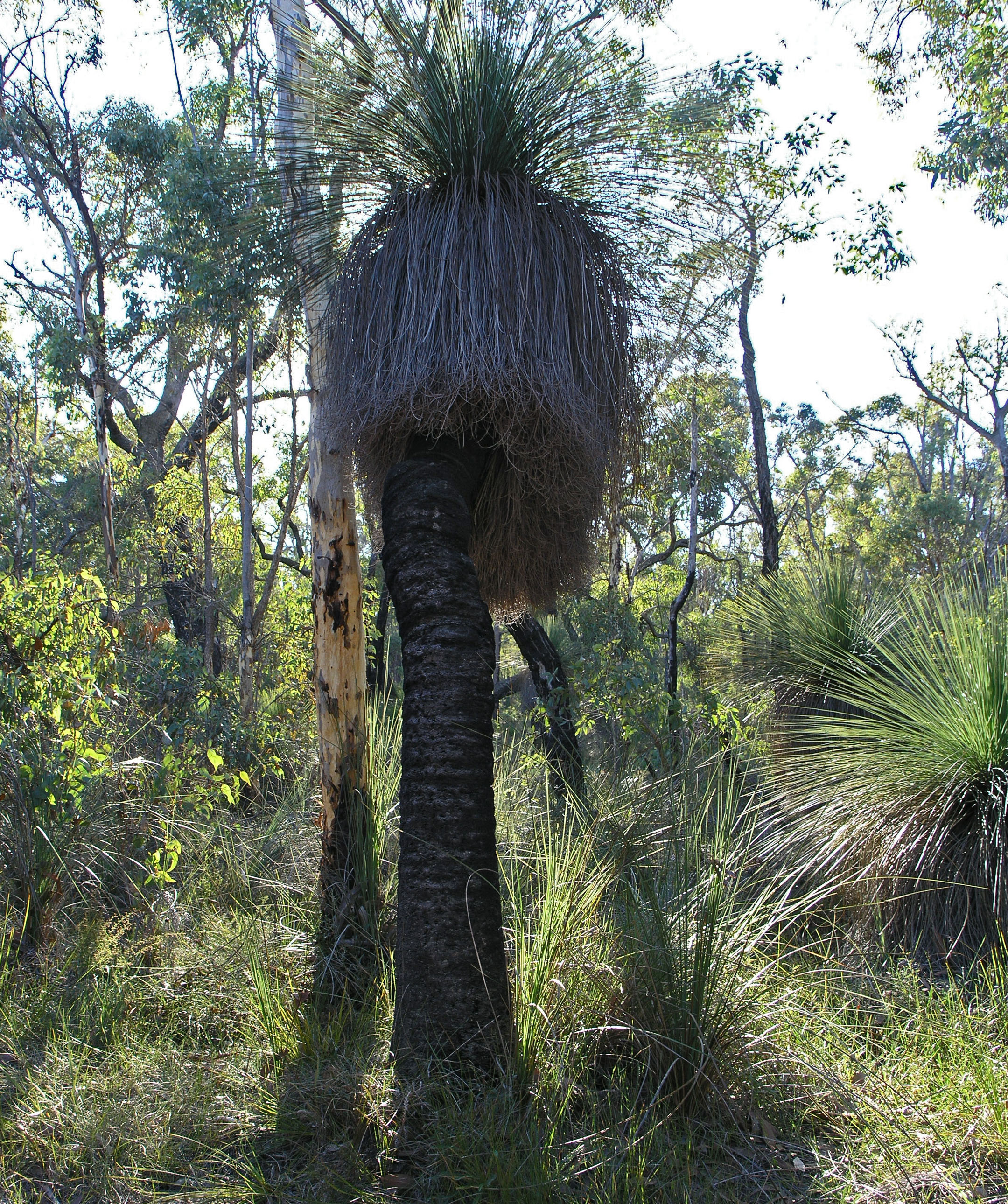- Xanthorrhoea australis
Taxobox
name = "Xanthorrhoea"

regnum =Plant ae
divisio = Magnoliophyta
classis =Liliopsida
ordo =Asparagales
familia =Xanthorrhoeaceae
genus = "Xanthorrhoea "
species = "X. australis"
binomial = "Xanthorrhoea australis"
binomial_authority = R. Br."Xanthorrhoea australis" (Austral Grass-tree) is the most commonly seen species of the genus "
Xanthorrhoea " growing around Anglesea in Victoria. Its fire-blackened trunk can grow up to 3 metres tall and is often branched. In Aboriginal languages, it is called 'Bukkup' or 'Kawee'.In Xanthorrhoeas, the main way to identify them is by looking at the cross-section of the leaves. In the case of the "X. australis", the cross-section is a rough diamond shape, and the colour of the leaves is a bluish-green.
"X. australis" is not often seen in bloom, due to the fact that this species requires fire to stimulate its reproductive cycle. However, if it does flower, a flowering spike grows out of the top of the plant. Flowers appear on the spike, usually covering frac|1|2–Frac|5|6 of the stem. The flowers of this particular species have 6 petals.
The crown of leaves of "X. australis" will be almost spherical in shape, the point of each leaf perfectly marking the shape of the imagined sphere.
"X. australis" has leaves which are softer and generally less rigid than other Xanthorrhoeas. Old leaves hang down forming a distinctive skirt-like feature that partly covers the fire-blackened trunk. "X. australis" flowers from July to December, but younger plants may flower in June. This species can also be found in
South Australia , the southern coast ofNew South Wales andTasmania .References
* [http://asgap.org.au/x-aus.html Association of Societies for Growing Australian Plants (ASGAP)]
* [http://www.anbg.gov.au/stamps/stamp.688.html Australian postage stamp featuring "X. australis"]External links
;Images
* [http://www.apstas.com/grasstree.jpg] , [http://nature.jardin.free.fr/image5/rg_xanthorrhoea_australis.jpg] , [http://www.asahi-net.or.jp/~zh7k-knk/shinka/13/1-2.jpg] , [http://www.anbg.gov.au/images/photo_cd/732131822178/029_2.jpg]
Wikimedia Foundation. 2010.
